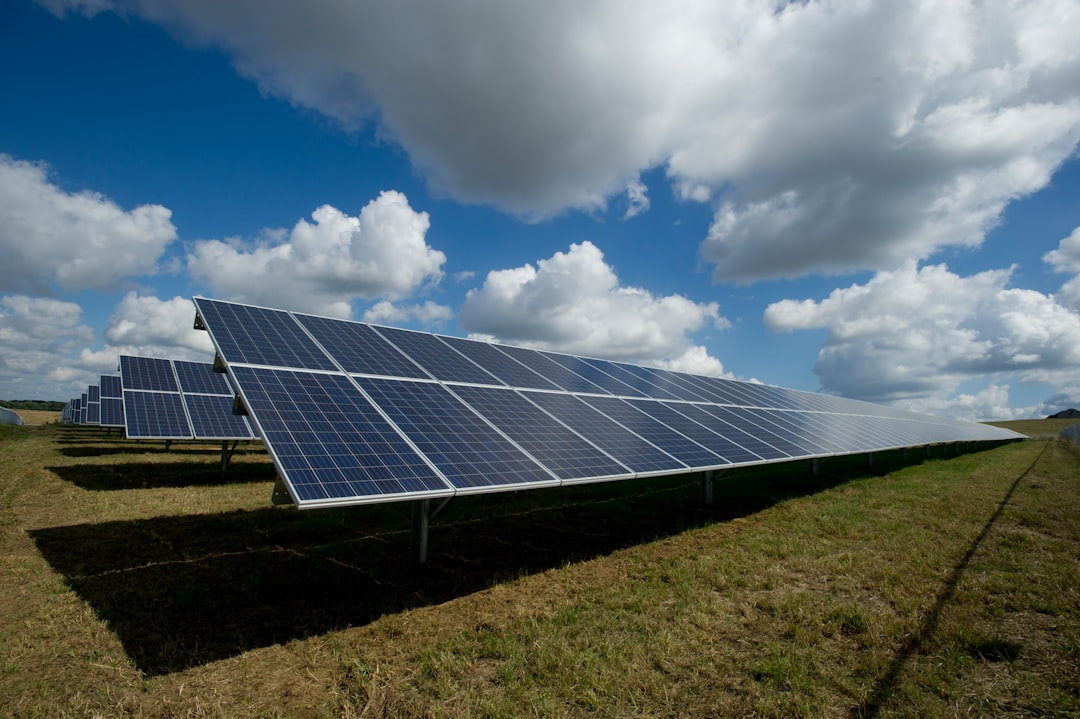As the world becomes increasingly aware of the impact of carbon emissions on the environment, there has been a growing interest in green energy. People are looking for environmentally-friendly alternatives to traditional sources of energy, and this trend has spilled over into the world of cryptocurrency.
Bitcoin, the world’s most popular cryptocurrency, has been in the spotlight for its energy-intensive mining process. Bitcoin mining requires a lot of computational power, which in turn requires a lot of energy. This has led to concerns about the impact of Bitcoin mining on the environment.
At the same time, Bitcoin’s popularity has been growing steadily. As more people use Bitcoin for transactions and investments, the demand for mining has increased. This has led to an even greater need for energy, and has put further pressure on the environment.
The question then becomes, how can we reconcile the growing popularity of Bitcoin with the need for green energy? Is it possible to use renewable energy sources for Bitcoin mining, and if so, what are the benefits? These are the questions we will explore in this blog post. So, let’s dive in and see what the future holds for Bitcoin and green energy.
Bitcoin Mining: An Energy-Intensive Process
When it comes to Bitcoin mining, the process is highly energy-intensive. In fact, it requires a significant amount of energy to mine just one Bitcoin. This is because of the way the Bitcoin blockchain network is designed. The system is decentralized, which means that there is no central authority controlling it. Instead, transactions are verified by a network of nodes, which are run by individuals and organizations around the world.
To verify these transactions and add them to the blockchain, these nodes have to solve complex mathematical problems. This process is known as proof of work (PoW). The first node to solve the problem gets to add the next block of transactions to the blockchain and is rewarded with a certain amount of Bitcoin.
The problem with PoW is that it requires a lot of energy to solve these complex problems. This is because the nodes have to use powerful computers to solve the equations. As the problems become more difficult, the nodes need more computing power. As a result, Bitcoin mining has become a highly energy-intensive process.
The energy consumption of Bitcoin mining has become a major concern in recent years. Some estimates suggest that the energy consumption of the Bitcoin network could rival that of small countries like Switzerland or Denmark. This has led to criticism of Bitcoin and other cryptocurrencies for their environmental impact.
However, the Bitcoin community is not blind to this issue. In fact, there are several efforts underway to make Bitcoin mining more eco-friendly. In the next section, we’ll take a closer look at the current state of Bitcoin mining and energy consumption.
As a result, Bitcoin mining has become a highly energy-intensive process.
The Current State of Bitcoin Mining and Energy Consumption
Bitcoin mining is an energy-intensive process that requires a lot of computational power. As a result, it consumes a significant amount of energy, which has led to concerns about the environmental impact of Bitcoin mining. In recent years, the amount of energy consumed by Bitcoin mining has increased dramatically, and it shows no signs of slowing down.
According to a report by the Cambridge Center for Alternative Finance, Bitcoin mining currently consumes around 121.36 terawatt-hours (TWh) of energy per year, which is more than the entire country of Argentina. This represents a significant increase from previous years, and if this trend continues, it could have a significant impact on the environment.
The majority of Bitcoin mining is currently done using fossil fuels, such as coal and natural gas. This is because these sources of energy are cheap and widely available, making them an attractive option for miners. However, the environmental impact of using fossil fuels for Bitcoin mining is significant, as it contributes to greenhouse gas emissions and climate change.
Despite the environmental concerns, there are some who argue that Bitcoin mining can be made more sustainable by using renewable energy sources. This is because renewable energy is becoming increasingly cost-effective and widely available, making it a viable option for miners.
However, the use of renewable energy for Bitcoin mining is still in its early stages, and there are many challenges to be overcome. For example, renewable energy sources such as solar and wind power are intermittent, which means that they may not be available all the time. This can make it difficult to maintain a stable and reliable energy supply for Bitcoin mining.
Despite these challenges, there are already some examples of renewable energy being used for Bitcoin mining. For example, a company called Soluna is building a wind farm in Morocco that will be used to power a Bitcoin mining operation. Similarly, a company called Bitfury has built a data center in Georgia that is powered entirely by hydroelectric power.
Overall, the current state of Bitcoin mining and energy consumption is a complex issue that requires careful consideration. While there are concerns about the environmental impact of Bitcoin mining, there are also opportunities for innovation and progress. By working together to find sustainable solutions, we can create a more sustainable future for both the crypto industry and the planet.
This can make it difficult to maintain a stable and reliable energy supply for Bitcoin mining.
The Potential of Renewable Energy for Bitcoin Mining
As we continue to witness the negative impact of climate change, it’s becoming more evident that we need to embrace sustainable practices to protect our planet. Luckily, Bitcoin mining has the potential to contribute to a greener future by utilizing renewable energy sources.
Renewable energy sources such as solar, wind, and hydroelectric power are becoming increasingly available and affordable. This means that Bitcoin miners can harness the energy generated by these sources to power their mining operations. By doing so, they not only reduce their carbon footprint but also save on energy costs.
What’s even more exciting is that renewable energy sources are often decentralized, just like Bitcoin. This means that miners can set up their operations in remote areas, where grid power is not available, and use renewable energy sources to power their mining rigs. This opens up new possibilities for Bitcoin mining, especially in countries that are struggling with energy shortages or have limited access to electricity.
However, it’s worth noting that the feasibility of using renewable energy sources for Bitcoin mining depends on several factors. These include the availability and reliability of the energy source, the cost of setting up the necessary infrastructure, and the regulatory environment.
Despite these challenges, there are already some impressive examples of renewable energy being used in Bitcoin mining. For example, a Bitcoin mining farm in Iceland is entirely powered by geothermal energy. In another example, a Canadian company has set up a Bitcoin mining operation that utilizes excess natural gas from an oil field, which reduces waste and provides a profitable solution for the oil industry.
The potential benefits of a partnership between Bitcoin and green energy are significant. Not only could it help reduce our reliance on non-renewable energy sources, but it could also stimulate the growth of renewable energy industries. Additionally, it could increase the adoption of Bitcoin by environmentally conscious individuals and organizations who are looking for a more sustainable alternative to traditional financial systems.
The potential of renewable energy for Bitcoin mining is enormous. By embracing sustainable practices, Bitcoin miners can not only reduce their carbon footprint but also save on energy costs. As renewable energy sources become more accessible and affordable, we can expect to see more examples of green Bitcoin mining operations. This is an exciting development that offers hope for a sustainable future for both Bitcoin and the planet.
By doing so, they not only reduce their carbon footprint but also save on energy costs.
Examples of Renewable Energy in Bitcoin Mining
As we discussed earlier, the potential of renewable energy in Bitcoin mining is massive. In fact, many Bitcoin miners have already started to shift towards renewable energy sources. Let’s take a look at some examples of renewable energy in Bitcoin mining.
One of the biggest examples of renewable energy in Bitcoin mining is the use of hydropower. Hydropower is a clean and renewable energy source that harnesses the power of water to generate electricity. The Pacific Northwest region of the United States has become a hub for Bitcoin mining due to its abundance of hydropower. In fact, one of the largest Bitcoin mining operations in the world, located in Wenatchee, Washington, is powered entirely by hydropower.
Another renewable energy source that’s gaining popularity in Bitcoin mining is solar power. Solar power has become increasingly affordable and efficient over the years, making it an attractive option for Bitcoin miners. Many miners are setting up solar panels and using the energy generated to power their mining operations. One such example is the Solar-Powered Bitcoin Mining Farm in California, which is entirely powered by solar energy.
Wind power is another clean and renewable energy source that’s being used in Bitcoin mining. In Texas, a Bitcoin mining company called Great American Mining has built a mining farm that’s powered entirely by wind energy. The farm is located on a wind farm, and the excess energy generated by the wind turbines is used to power the mining operation.
Geothermal energy is another renewable energy source that’s being explored in Bitcoin mining. Iceland is a prime example of a country that’s using geothermal energy to power its Bitcoin mining operations. The country has an abundance of geothermal energy, which is used to power the mining farms.
These examples show that renewable energy is a viable option for Bitcoin mining. By harnessing the power of clean and renewable energy sources, Bitcoin miners can reduce their carbon footprint and contribute to a more sustainable future.
In the next section, we’ll discuss the benefits of Bitcoin and green energy partnership.
Many miners are setting up solar panels and using the energy generated to power their mining operations.
Benefits of Bitcoin and Green Energy Partnership
As we have seen, Bitcoin mining is a very energy-intensive process that contributes to carbon emissions and environmental degradation. However, this doesn’t mean that Bitcoin and green energy can’t work together. In fact, there are several benefits to be gained by combining Bitcoin mining with renewable energy sources.
Firstly, green energy can help to reduce the carbon footprint of Bitcoin mining. By using renewable energy sources like solar or wind power, miners can significantly reduce their reliance on fossil fuels and decrease their impact on the environment. This is especially important given the increasing concerns over climate change and the urgent need to transition to more sustainable energy sources.
Secondly, a partnership between Bitcoin and green energy can help to promote the adoption of renewable energy technologies. As more miners shift towards sustainable energy sources, this can create a market for renewable energy providers, which can in turn drive down the costs of renewable energy and make it more accessible to the wider population. This is a win-win situation for both the Bitcoin industry and the environment.
Thirdly, green energy can provide a more stable and reliable source of power for Bitcoin mining operations. Unlike traditional energy sources, which can be affected by fluctuations in supply and demand, renewable energy sources are generally more consistent and reliable. This can help to reduce the operational costs of Bitcoin mining and make it more profitable over the long-term.
Finally, a partnership between Bitcoin and green energy can help to foster innovation and creativity in the energy sector. As more miners explore the potential of renewable energy sources, this can lead to new technological breakthroughs and advancements that could benefit the wider energy industry. This could include developments in energy storage, grid management, and energy efficiency, among other things.
While there are certainly challenges associated with Bitcoin mining and energy consumption, there are also many opportunities for the Bitcoin industry to partner with green energy sources and create a more sustainable future. By reducing their carbon footprint, promoting renewable energy adoption, and fostering innovation, Bitcoin miners can help to create a more environmentally conscious and socially responsible global economy.
This is a win-win situation for both the Bitcoin industry and the environment.
Conclusion: A Sustainable Future for the Crypto Industry
As we’ve explored in this blog post, Bitcoin mining is an energy-intensive process that has raised concerns about its impact on the environment. However, the potential for renewable energy to power Bitcoin mining offers a promising solution to this issue.
Examples of renewable energy being used for Bitcoin mining are already emerging, from solar-powered mining farms to hydroelectric power stations. These examples demonstrate the feasibility of a sustainable future for the crypto industry.
But the benefits of a partnership between Bitcoin and green energy extend beyond just reducing the industry’s carbon footprint. The use of renewable energy can also lead to lower electricity costs for miners and greater efficiency in the mining process.
It’s important to note that the exploration and implementation of renewable energy solutions for Bitcoin mining is still in its early stages. There’s much to be learned and discovered as the industry continues to grow and evolve.
As we move towards a more sustainable future, it’s essential that we remain open-minded and curious about the possibilities that exist. With collaboration and innovation, the crypto industry can lead the way in adopting green energy practices and setting an example for other industries to follow.
In conclusion, the potential for renewable energy to power Bitcoin mining offers a promising solution to the industry’s energy consumption concerns. By embracing green energy solutions, the crypto industry can not only reduce its impact on the environment but also unlock new efficiencies and cost savings. Let’s work together towards a sustainable future for the crypto industry and beyond.





